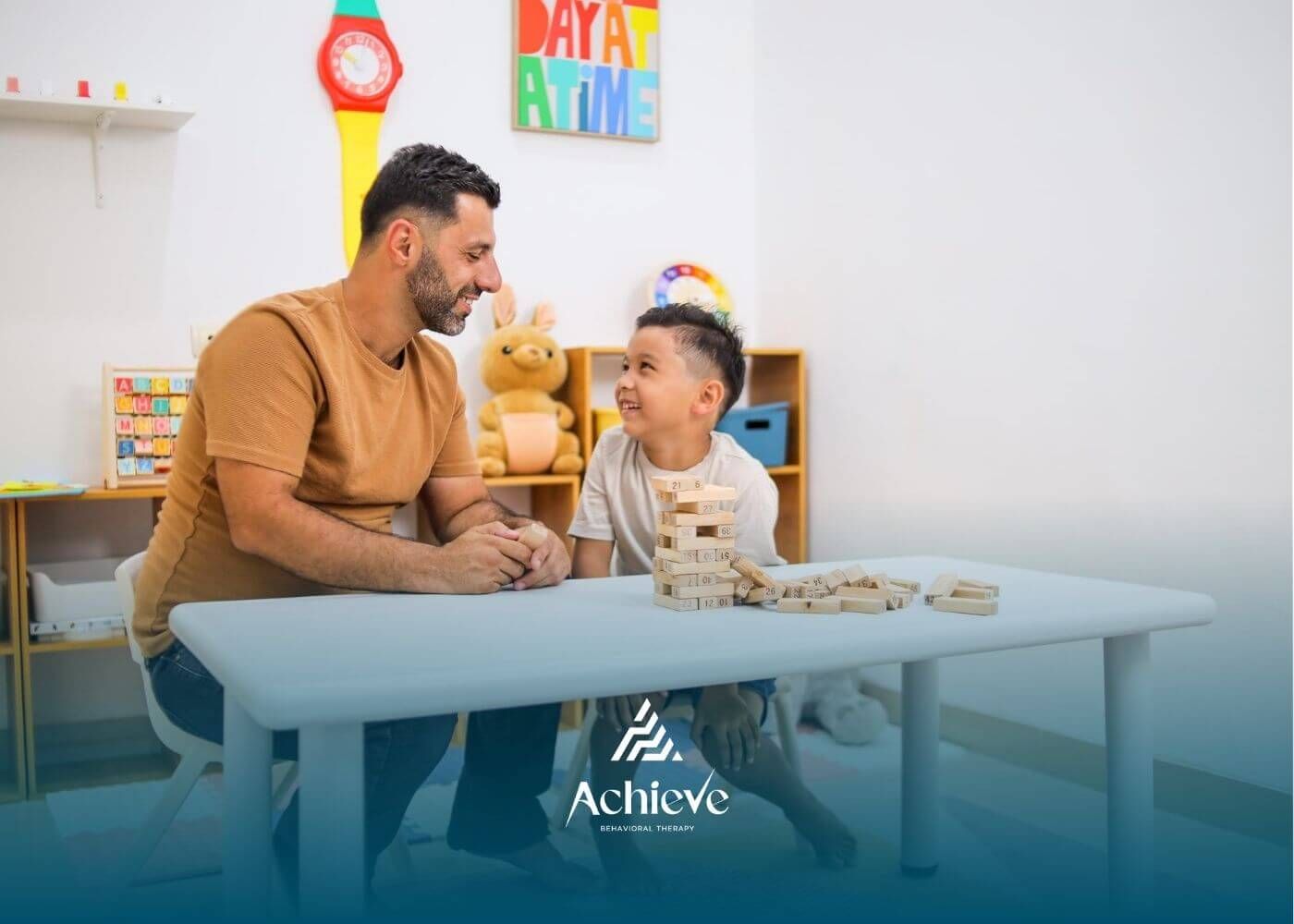The 7 Dimensions of ABA Therapy: A Parent’s Guide to Lasting Progress

When I sit down with parents for the first time, I can often feel the mix of hope and worry in the room. You want the very best for your child, and you’re searching for answers that actually make a difference.
That’s where the 7 dimensions of ABA come in. These seven guiding principles are what make Applied Behavior Analysis more than just “therapy” — they make it a life-changing approach that helps children learn skills they’ll use every single day.
In this post, I’ll walk you through each of the 7 dimensions of ABA from my perspective as an ABA therapist. My hope is that by the end, you’ll feel more informed, reassured, and hopeful about the journey ahead.
1. Applied: Making Skills Truly Meaningful
At its core, ABA is about helping children build skills that make a real difference in their lives. The “Applied” dimension means we always ask: How will this skill help the child at home, school, or in the community?
For example, if I’m teaching a child to request a snack, it’s not just about saying the word “cracker.” It’s about giving them a tool to meet their needs, reduce frustration, and feel heard. Applied goals are practical, relevant, and immediately useful.
I once worked with a little boy who loved puzzles but couldn’t ask for help when pieces didn’t fit. He would cry or give up. We taught him to simply say “help.” That one word reduced his meltdowns and let him enjoy his favorite activity again. That’s the power of “Applied.”
2. Behavioral: Focusing on What We Can See and Measure
The “Behavioral” dimension reminds us to look at actions we can observe and track. Instead of saying, “She’s frustrated,” we describe the behavior: “She’s throwing the toy and crying.”
Why does this matter? Because it keeps therapy clear and objective. If we can measure it, we can track progress.
For parents, this also means you’ll see concrete data — graphs that show your child is using more words, having fewer tantrums, or following directions more often.
According to the CDC, 1 in 36 children in the U.S. is diagnosed with autism (2023 data). With numbers rising, families need therapies that show measurable progress — which is exactly why ABA emphasizes observable behavior.
3. Analytical: Using Data to Guide Every Step
This is where ABA shines. The “Analytical” dimension means we rely on data to make decisions, not guesswork. Every session, we collect data on how your child responds to teaching. If something isn’t working, we adjust.
It’s a bit like being a detective — we look at patterns, test strategies, and fine-tune until we see progress.
I once taught a child to wash hands using picture prompts. After a week, the data showed he stalled at the “turn off water” step. Instead of pushing harder, we adjusted the teaching — added a visual reminder and more practice — and within days, he mastered it.
That’s the “Analytical” dimension in action: data-driven, flexible, and always focused on progress.
4. Technological: Clear, Consistent Teaching Methods
The “Technological” dimension means that ABA programs should be written clearly enough that anyone — whether it’s me, another therapist, or even you as a parent — can understand and follow them.
This ensures consistency. Your child won’t be confused by different teaching styles; instead, they’ll experience predictable, supportive learning across settings.
If your child is in ABA therapy, don’t hesitate to ask to see the written programs. They should be easy to read and walk you through step by step. That way, you can practice skills at home too.
5. Conceptually Systematic: Grounded in Proven Science
“Conceptually Systematic” might sound technical, but it simply means that ABA isn’t random. Every strategy we use is rooted in established behavioral principles, like positive reinforcement or shaping.
For instance, when we praise a child for saying “juice” instead of crying, we’re using the principle of reinforcement: behaviors that get rewarded are more likely to happen again.
This matters because ABA isn’t about quick tricks — it’s about using tested, scientific methods that have been studied for decades.
Studies have shown that early intensive ABA therapy can significantly improve language, social skills, and IQ in young children with autism (Lovaas, 1987; Smith, 2010). That’s why sticking to these proven principles is so important.
6. Effective: Therapy That Truly Works
At the end of the day, ABA must work. The “Effective” dimension means that the strategies we use actually help the child reach meaningful goals. If a program isn’t showing results, we don’t keep doing it — we change it.
I worked with a teenage client who struggled with daily living skills. After months of trial and error, the most effective approach ended up being video modeling — watching short clips of the skill before practicing it. Once we found what worked, progress took off.
Effectiveness in ABA also means we set goals that are big enough to matter, not just small wins that look good on paper.
7. Generality: Skills That Last and Transfer
This is the dimension parents often care about most: Will my child use these skills outside of therapy? That’s what “Generality” means — making sure skills stick and apply across places, people, and time.
For example, if your child learns to greet me with “Hi,” that’s great. But I want to see them say “Hi” to their teacher at school, their grandparents at home, and the cashier at the grocery store too.
One of my clients learned to tie his shoes in therapy. To ensure generality, we practiced with different shoes, in different rooms, and with both Mom and Dad. That way, the skill became part of his daily life, not just something he did in a therapy session.
Why the 7 Dimensions Matter for Families
When all 7 dimensions of ABA work together, ABA therapy is more than just drills or flashcards — it’s a comprehensive approach that helps children thrive in the real world.
As an ABA therapist, I see the biggest transformations when therapy is:
That’s the recipe for success.
If you’re a parent in New Jersey or North Carolina, I want you to know you’re not alone. At Achieve ABA, our team provides both in-home ABA therapy and school-based ABA therapy, built around these 7 dimensions.
We believe every child deserves the chance to communicate, connect, and grow. Whether it’s helping a toddler say their first words or supporting a teenager in building independence, we’re here to walk alongside your family.
If you’re ready to explore how ABA therapy can support your child, reach out to Achieve ABA today. Together, we can build the skills that matter most for your child’s future.
FAQs
1. At what age should my child start ABA therapy?
Research shows that early intervention — starting ABA therapy as young as 18–24 months — can lead to the best long-term outcomes. That said, it’s never “too late.” ABA can support children and teens of all ages in building meaningful skills.
How do I know if ABA therapy is working for my child?
You should see measurable progress. Your therapy team will collect data and share regular updates. Look for improvements not only in therapy sessions but also at home and school — like fewer tantrums, more communication, or greater independence.
What’s the difference between in-home ABA and school-based ABA?
In-home ABA focuses on skills your child uses in daily life — communication, play, routines, and family interactions. School-based ABA supports success in the classroom, from following directions to peer interactions and academic readiness. Many families choose both for a well-rounded approach.
Sources:
- https://pmc.ncbi.nlm.nih.gov/articles/PMC1310980/
- https://pmc.ncbi.nlm.nih.gov/articles/PMC10169944/
- https://www.autismparentingmagazine.com/aba-principles/
- https://www.umassglobal.edu/blog-news/what-is-applied-behavior-analysis-exploring-aba-therapy-careers
- https://psycnet.apa.org/record/2023-11668-033
Need Support?
We're Here to Help!
Our experienced team is ready to assist you. Reach out today to discuss how we can support your child's development and well-being.
Get started with expert ABA therapy today.













